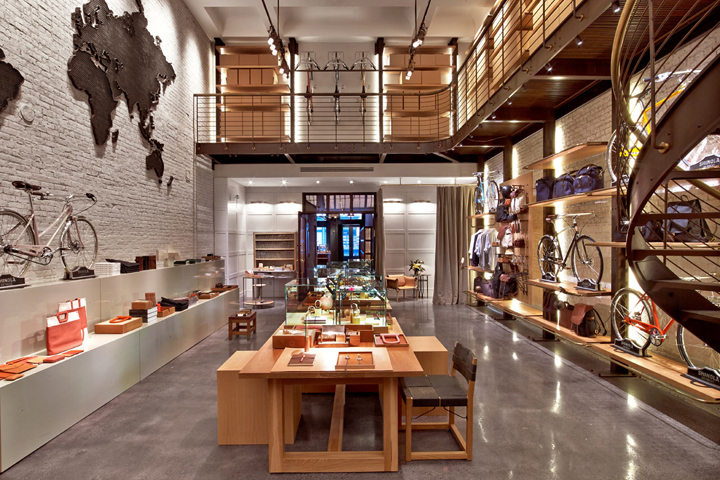With retail technology quickly evolving, a common question is “What will they think of next?”. The retail landscape is undergoing a digital transformation. Technology is rapidly advancing and consumer expectations are changing just as fast. For retailers to survive well into the future here are the trends they need to be aware of.
1. Shopping will become easier, and sharing is caring
Buying commodities will become easier – and shopping will become more streamlined. Amazon has entered the Australian market and offering same-day delivery, auto-renewals and tap to buy. Amazon is quickly disrupting distribution and taking the ‘chore’ out of shopping. This will force homegrown retailers to catch up.
People will visit stores less for “great products’’ and more for “great experiences”. Retail is becoming more diverse – independent retailers are becoming more prevalent and artisan products more popular. Consumers are looking for products that they can love and cherish and technology is driving this.
Why buy when you can borrow, for a fraction of the price? Peer-to-peer rentals will continue to grow in popularity.
2. Customisation is key
When buying physical items customers are looking for a product that reflects who they are, their lifestyle or uniqueness. Retailers need to understand the consumers need for self-expression.
If a customer can build and personalise their products to meet these needs they will be more willing to part with their cash.
3. The rise of the Robot
We won’t see the complete phasing out of physical shop assistants in 2018, but we will see increased use of robots in retail operations. Amazon has set the tone for the rise of robots, using 75,000 robots to pack and ship items in their US warehouses.
Australian retailers have begun to harness automated drone delivery. Pharmacy giant Chemist Warehouse and Mexican food outlet Guzman y Gomez have already started delivery drone trials.
We will also begin to see more AI online – say hello to chatbots. Messaging apps like Facebook Messenger are becoming more popular, and retailers are now using automatic messaging bots. The bots make it easier to build client relationships and streamline communication.
4. Get ready to get social
Retailers are urged to develop intentional social media strategies, rather than just posting updates and photos to their feed.
With the introduction of Instagram stories, Facebook Live and messenger apps it’s important for retailers to improve their social media presence. Consumers want brands to tell stories and engage with them in real time.
Instagram stories are a powerful tool for brands. Quickly make users aware of new releases, restocks and sales with direct links allowing customers to shop then and there.
5. Big Data – the short story
Big data is a quickly trending term in the rapidly evolving digital world. Big Data gives retailers an opportunity to differentiate themselves from their competitors and remain relevant in the market.
Offering insights into their consumers like never before, data collection is shaping the way that retailers market, sell and interact with their customers.
Walmart is now using facial recognition software in their stores. The technology allows them to monitor customer satisfaction alerts associates to open more registers.
Big data isn’t just for large industry players, smaller businesses are leveraging data to gain new insights into their consumer base. Using this information to make changes on how products and services are delivered.
6. Get ready to embrace Augmented Reality
While Augmented Reality (AR) isn’t new, it is is quickly evolving into a very useful piece of technology. AR is now standard on new iPhones and iOS making it easier for brands to harness this technology.
Retail giant IKEA is one of the first companies to take advantage of this incredible technology. Launching ‘IKEA Place’, an app which allows users to preview how different IKEA products will look in their physical environment.
This year we predict that more retailers will begin to make use of the technology and adapt it to suit their brand.
7. Physical stores aren’t a thing of the past…yet
Despite online stores rising in popularity, brick and mortar stores are still alive and well. That won’t be changing anytime soon.
The traditional store format is changing. Retailers are putting more focus on providing great experiences as well as great products.
Technology is making it easier than ever to open physical stores and industry data proves this. In 2017 alone there was a net increase of 4,000 stores. For every one store that closed, 2.7 opened. Cloud-based solutions are making it easier for retailers to open stores quickly without making huge cash investments. Due to this, we will see more small retailers entering the market in 2018.
8. The Conscious Consumer
In the past, speed and price dictated purchasing behaviours but, the tide is turning. Consumers are aware now more than ever, that when they’re spending their cash they’re making a statement on the practices they support. More shoppers are choosing brands and products that are ethically and responsibly sourced.
With retail manufacturing being the second most polluting industry on earth, people are looking to make positive conscious consumption decisions.
Retailers who have focused on health or sustainability from their genesis are thriving.
9. Home is where the heart is…
As technology evolves people are less willing to leave the house to purchase common commodities. Retailers are aware of this and are developing new ways to connect with consumers in their homes.
Grocery delivery has come a long way, now we can expect other retailers to ramp up their delivery services. Technology is going to make it easier to get what you want without leaving the house.
In the United States, retail giants Amazon and Best Buy are trialling travelling salesmen. Both retailers are sending salespeople into consumers homes to make recommendations for electronics they can use in their homes.
10. The curious comeback of the QR code
When first introduced, QR codes were a failure, but don’t look now – they’re making a comeback. With Apples recent iOS 11 update, QR codes can now be read in the native camera app. Simply point click and it will automatically read the code.
Now that technology has finally caught up, we will progressively see retailers introducing QR codes back into their sales and marketing. Incorporating QR codes into advertising and packaging allows shoppers to quickly visit websites directly from their mobile phones.
11. It’s all about the package
Retailers that offer an assortment of products in a curated package will thrive in 2018. Today people have so many options and are looking for brands to tell them what they need.
This is being performed in a few creative ways, brands are leverage Big Data to create thoughtful hand selected arrangements their customers will love.
Another way retailers are showcasing their curation services is by subscription boxes. Through monthly subscriptions, brands are offering products based on their subscriber’s profiles to create individualised, and thoughtful packages.
12. Diversity is key in physical stores
Soon the traditional shop format will be a thing of the past. With automation becoming more mainstream, consumers want retail experiences worth leaving the house for.
Retailers have recognised this, and are taking a flexible approach to store design.
Notable examples include Target, which has been opening large format stores in suburban areas and smaller style stores in inner-city locations.
It is anticipated that more retailers will begin to take this approach with a variety of store formats designed to service different markets.
2018 is just the beginning…
For businesses to thrive in 2018 and beyond its all about adaptability, and understanding the needs of the consumer base. Leveraging Big Data and taking advantage of advances in technology will ensure retailers flourish.
The most important factor to consider when planning the next move needs to be the consumer. What do they want and how can retailers make it easier for them to achieve this?


Comment